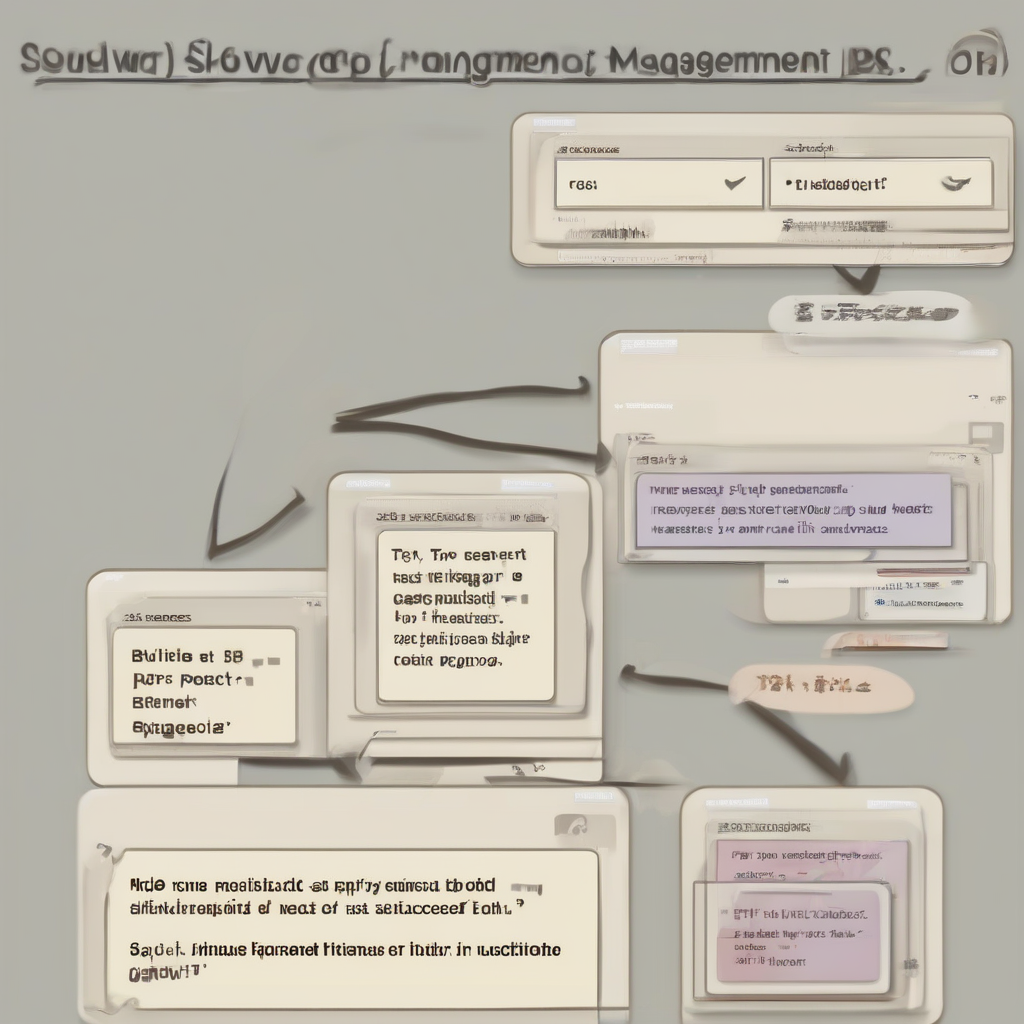Mastering Software Project Management: A Comprehensive Guide
Software project management is a multifaceted discipline demanding a unique blend of technical expertise, leadership skills, and meticulous planning. Successfully navigating the complexities of software development requires a deep understanding of various methodologies, tools, and strategies. This comprehensive guide explores the key aspects of software project management, providing insights into effective practices and potential pitfalls.
I. Project Initiation and Planning
The foundation of any successful software project lies in thorough planning and a clearly defined scope. This phase involves:
- Defining Project Goals and Objectives: Clearly articulating the project’s purpose, desired outcomes, and key performance indicators (KPIs).
- Feasibility Study: Assessing the technical, economic, and operational feasibility of the project.
- Requirements Gathering and Analysis: Eliciting, documenting, and analyzing stakeholder requirements, ensuring clarity and completeness.
- Scope Management: Defining the project boundaries, deliverables, and exclusions, and managing scope creep throughout the project lifecycle.
- Work Breakdown Structure (WBS): Decomposing the project into smaller, manageable tasks and sub-tasks.
- Resource Planning: Identifying and allocating the necessary resources, including personnel, equipment, and budget.
- Schedule Development: Creating a realistic project schedule, defining task dependencies and milestones.
- Risk Assessment and Management: Identifying potential risks and developing mitigation strategies.
- Communication Plan: Establishing clear communication channels and protocols among stakeholders.
- Project Charter: Formalizing the project’s objectives, scope, stakeholders, and responsibilities.
II. Project Execution and Monitoring
Once the planning phase is complete, the focus shifts to execution and monitoring. This involves:
- Team Management: Leading and motivating the development team, fostering collaboration and communication.
- Task Management: Tracking task progress, resolving issues, and ensuring timely completion.
- Agile Methodologies: Implementing iterative development practices such as Scrum or Kanban to enhance flexibility and responsiveness.
- Quality Assurance (QA): Implementing rigorous testing procedures to ensure the quality of the software.
- Change Management: Managing changes to requirements, scope, or schedule effectively and efficiently.
- Progress Monitoring: Regularly tracking progress against the project plan and identifying potential deviations.
- Reporting: Providing regular reports to stakeholders on project status, risks, and issues.
- Issue Tracking and Resolution: Proactively identifying and resolving issues that may impact the project’s success.
- Configuration Management: Maintaining control over the software’s source code, documentation, and other assets.
III. Project Closure and Post-Project Review
The final phase involves completing the project and evaluating its success.
- Project Completion: Ensuring all deliverables are completed and meet the defined requirements.
- Documentation: Creating comprehensive project documentation, including lessons learned.
- Final Report: Preparing a comprehensive report summarizing the project’s outcomes, successes, and challenges.
- Post-Project Review: Conducting a thorough review of the project to identify areas for improvement in future projects.
- Knowledge Management: Capturing and disseminating project knowledge to improve future projects.
- Stakeholder Feedback: Gathering feedback from stakeholders to assess project satisfaction and identify areas for enhancement.
IV. Software Development Methodologies
Choosing the right software development methodology is crucial for project success. Popular methodologies include:
- Waterfall: A linear, sequential approach where each phase must be completed before the next begins.
- Agile: An iterative and incremental approach emphasizing flexibility, collaboration, and customer feedback.
- Scrum: A specific Agile framework utilizing short iterations (sprints) and daily stand-up meetings.
- Kanban: A visual system for managing workflow and limiting work in progress.
- Lean: A methodology focusing on eliminating waste and maximizing value.
- DevOps: A set of practices that automates and integrates the processes between software development and IT operations.
V. Project Management Tools and Technologies
Effective project management relies on leveraging appropriate tools and technologies.
- Project Management Software: Tools like Jira, Asana, Trello, and Microsoft Project for task management, collaboration, and reporting.
- Version Control Systems: Git for managing source code and collaborating on development.
- Collaboration Platforms: Slack, Microsoft Teams, and Google Workspace for communication and information sharing.
- Bug Tracking Systems: Jira, Bugzilla, and Mantis for tracking and managing software defects.
- Testing Tools: Selenium, JUnit, and Appium for automated testing.
- Project Portfolio Management (PPM) Software: Tools for managing multiple projects simultaneously.
VI. Risk Management in Software Projects
Identifying and mitigating risks is crucial for successful project delivery. Common risks include:
- Scope Creep: Uncontrolled expansion of project requirements.
- Schedule Slippage: Delays in project completion.
- Budget Overruns: Exceeding the allocated budget.
- Technical Challenges: Unforeseen technical difficulties.
- Resource Constraints: Lack of necessary resources (personnel, equipment, etc.).
- Communication Breakdown: Ineffective communication among stakeholders.
- Requirement Volatility: Changes in project requirements during development.
VII. Effective Communication and Collaboration
Effective communication and collaboration are essential for successful software project management.
- Regular Meetings: Conducting regular meetings to track progress, discuss issues, and make decisions.
- Clear Communication Channels: Establishing clear communication channels and protocols.
- Team Building: Fostering a positive and collaborative team environment.
- Conflict Resolution: Addressing conflicts promptly and fairly.
- Stakeholder Engagement: Keeping stakeholders informed and involved throughout the project lifecycle.
VIII. Measuring Project Success
Measuring project success goes beyond simply delivering the software on time and within budget. Key metrics include:
- On-Time Delivery: Meeting the project’s deadline.
- On-Budget Delivery: Staying within the allocated budget.
- Meeting Requirements: Delivering software that meets the specified requirements.
- Quality of Software: Ensuring the software is of high quality and meets user expectations.
- Customer Satisfaction: Assessing customer satisfaction with the delivered software.
- Return on Investment (ROI): Evaluating the financial return on the investment in the project.
IX. Continuous Improvement
Software project management is an ongoing process of learning and improvement. Continuous improvement involves:
- Regular Retrospectives: Conducting regular retrospectives to identify areas for improvement.
- Lessons Learned: Documenting lessons learned from past projects.
- Process Optimization: Continuously optimizing project processes and methodologies.
- Team Training and Development: Investing in team training and development to enhance skills and capabilities.

